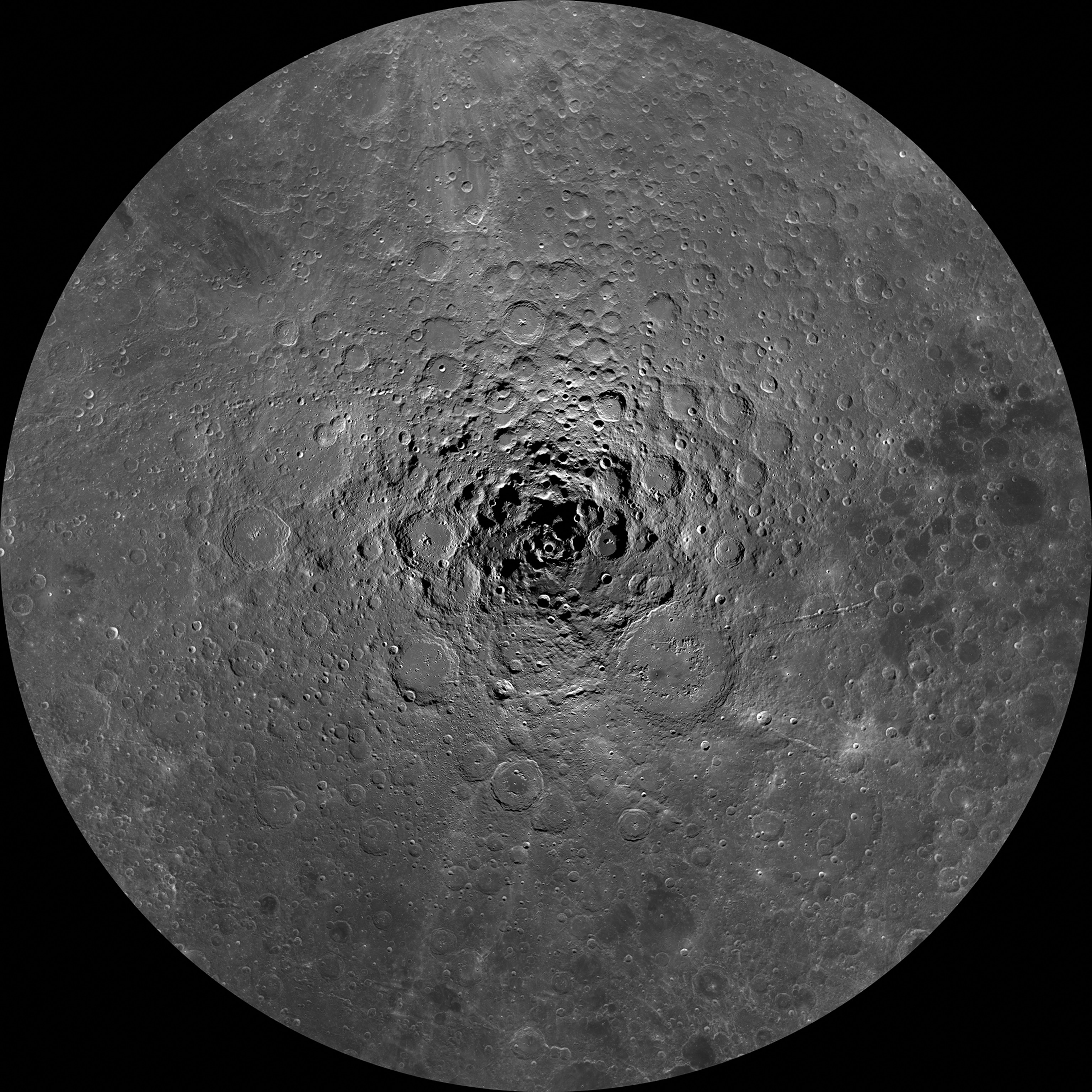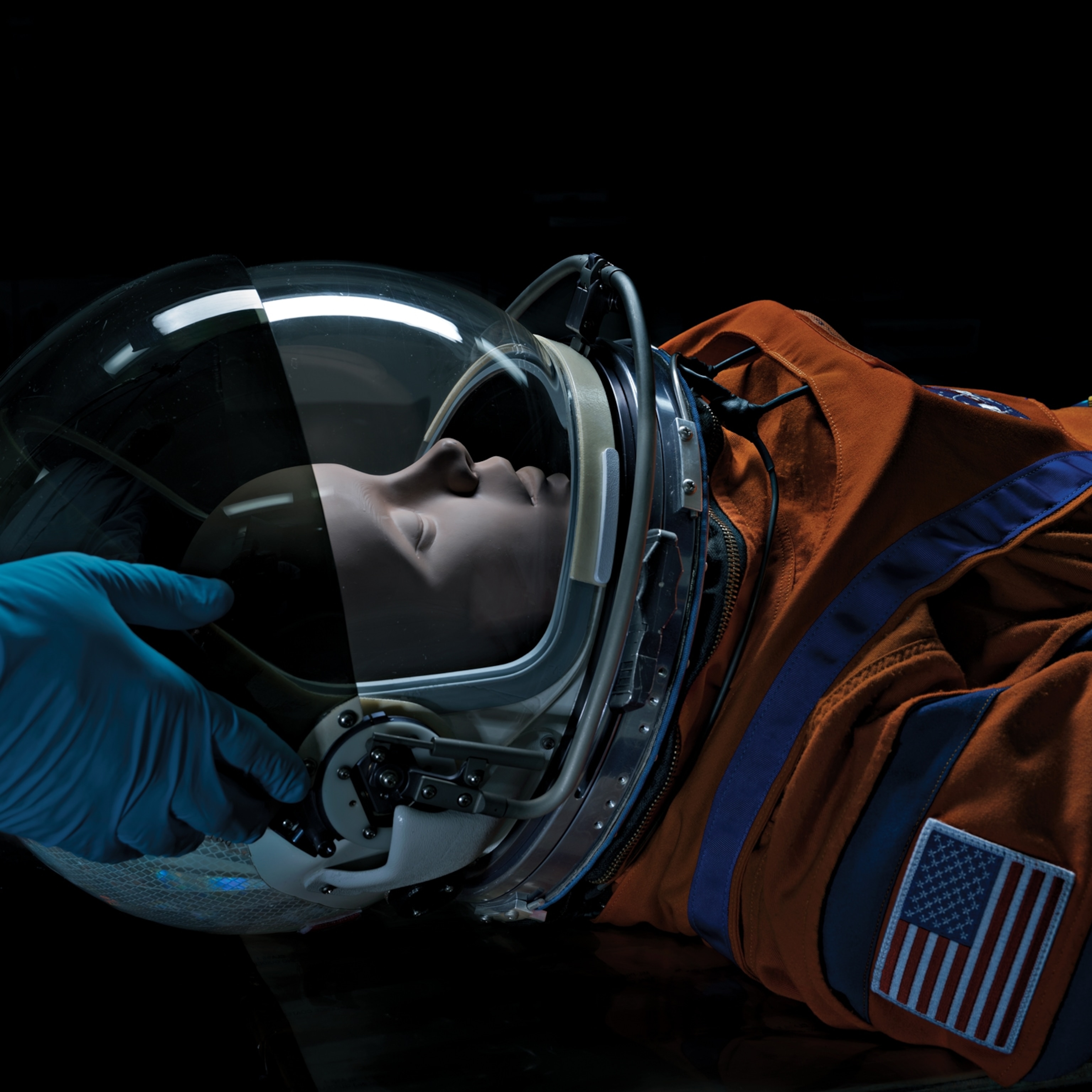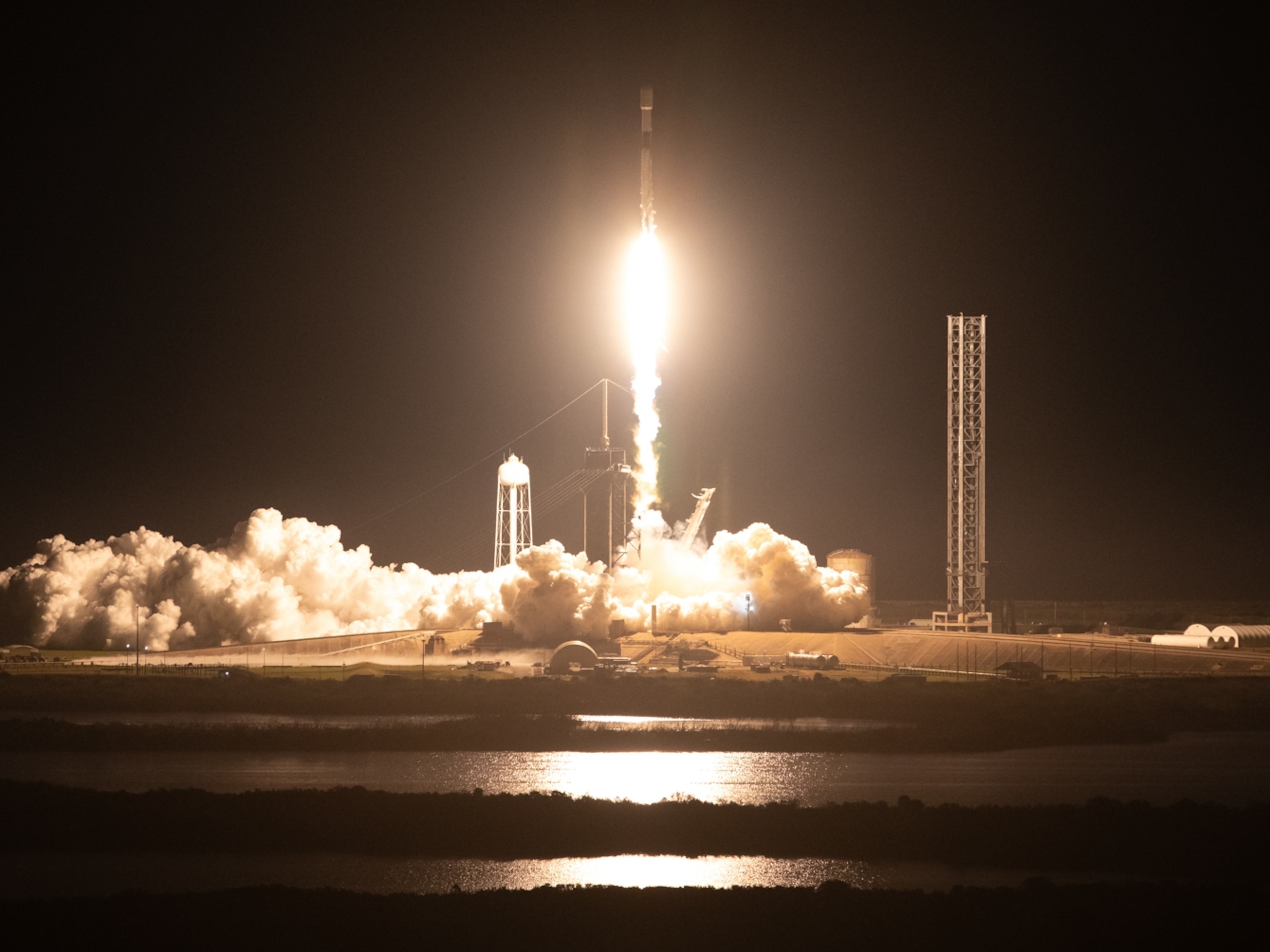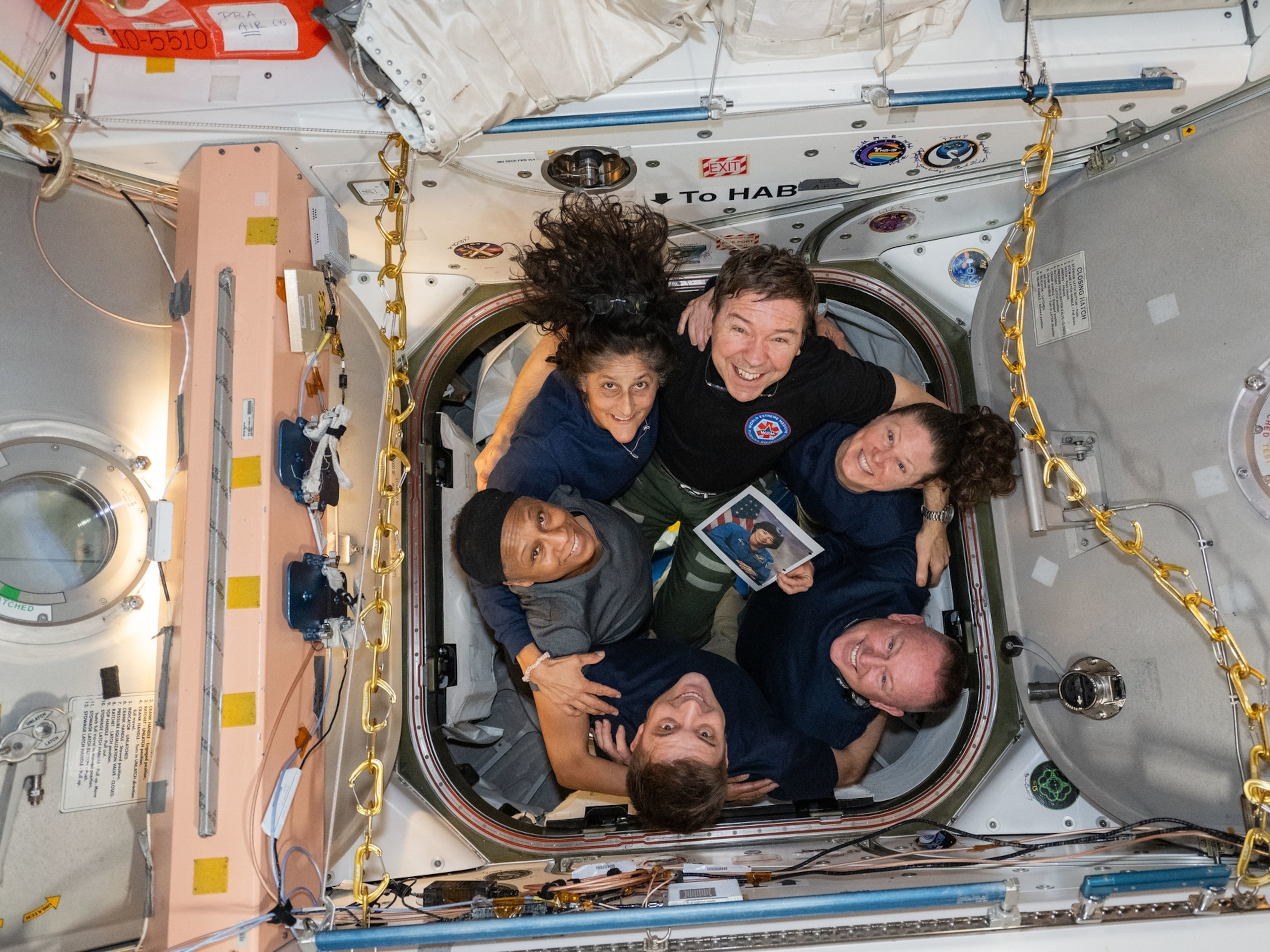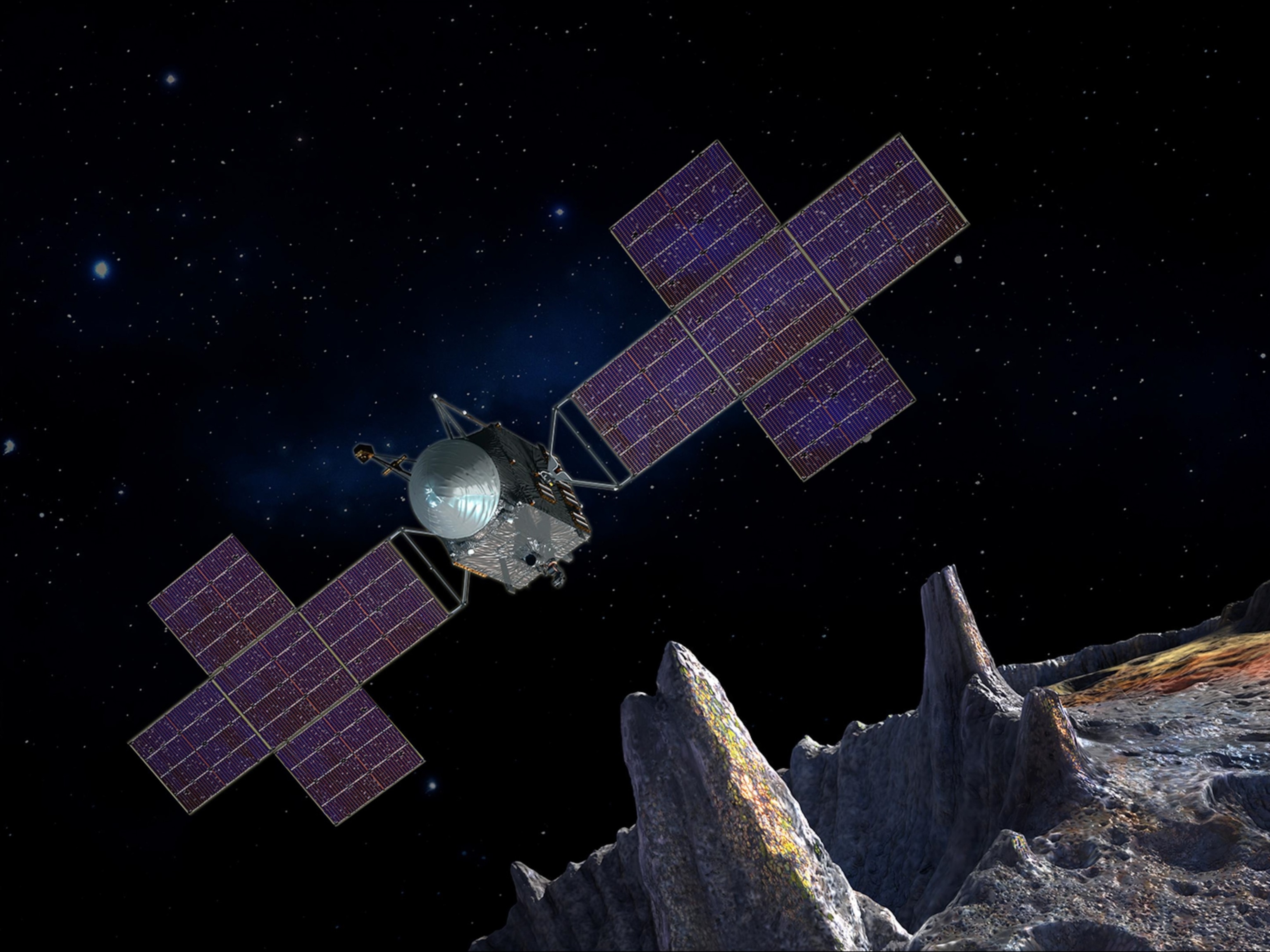The moon’s darkest corners are a mystery. This image offers a stunning new glimpse.
NASA’s new ShadowCam is peering into places near the moon’s poles that never see sunlight. What lurks there—and could it be harnessed to launch the next era of space exploration?

Until now scientists could not see some areas near the moon’s mysterious south pole. But new technology has lit up pockets shrouded in permanent darkness, among the coldest places in the entire solar system. A new image is giving scientists a view of one of these darkened craters before astronauts are scheduled to touch down nearby during the Artemis III mission in 2025.
Such images are not merely of academic interest—what they reveal could be critical for humans heading to the moon. In that darkness, we may find the means to survive.
“If there is water ice there, then that water ice can be recovered and it can be used for astronaut consumables, it can be used to shield astronauts from harmful space radiation, and the water can be used for rocket propellant,” says David Kring, a planetary scientist at the Lunar and Planetary Institute in Houston, Texas.
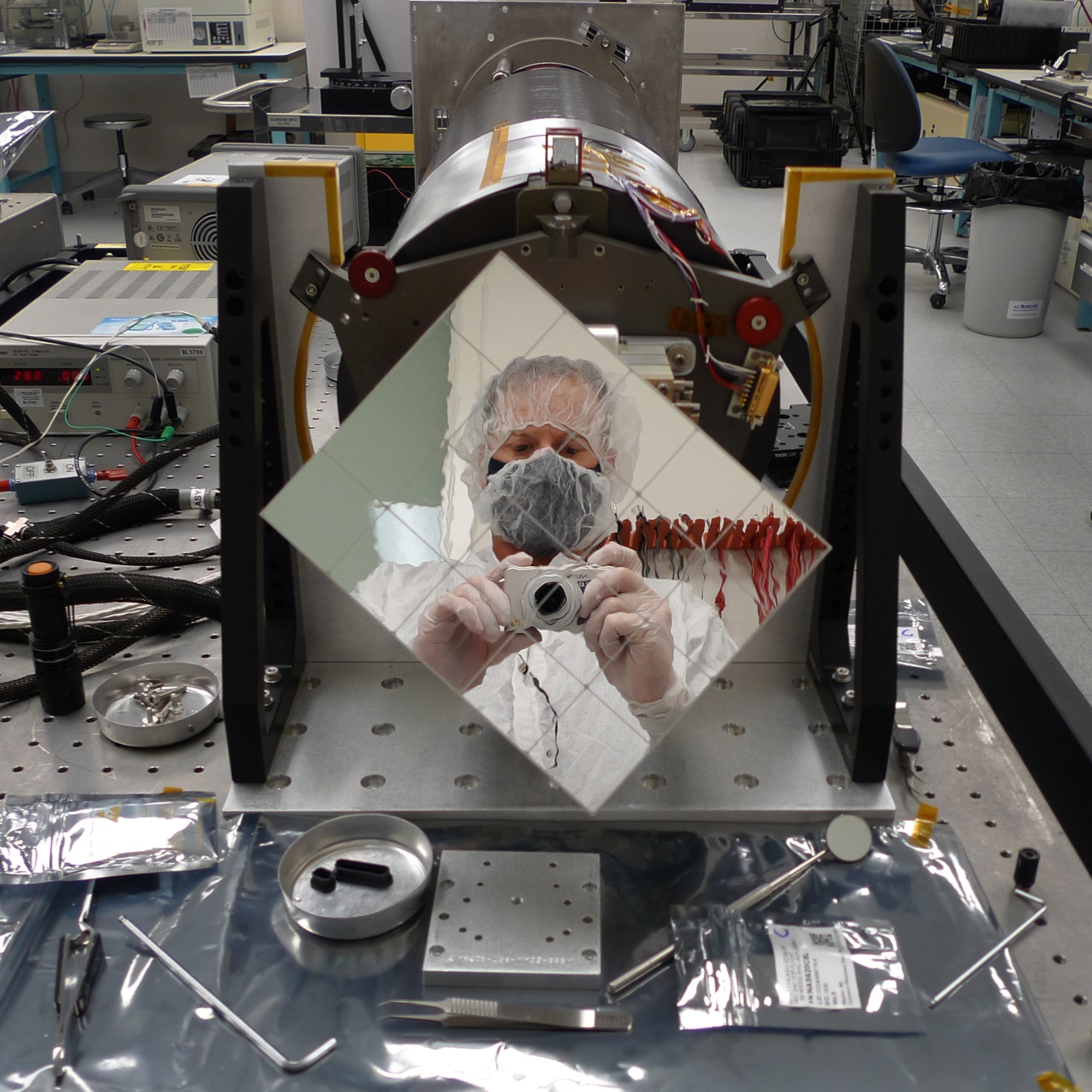
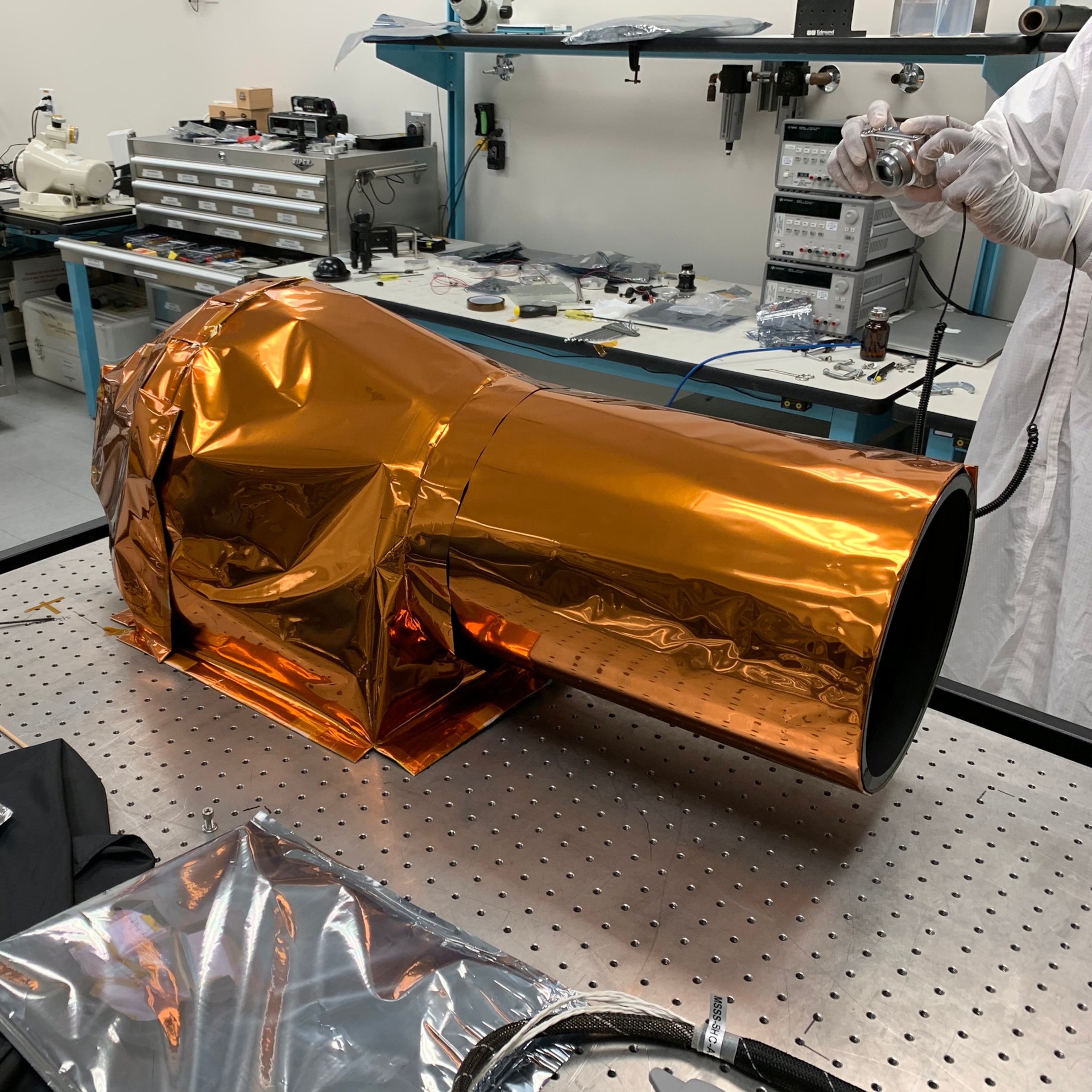
These craters may contain deposits of materials called volatiles, which are ices of water and other compounds such as carbon dioxide that would vaporize to gas in warmer temperatures.
“Fifty years ago we had no clue that there was ice on the surface of the moon,” says Jacob Bleacher, chief exploration scientist at NASA. These ancient deposits could be studied to create a “storybook,” he says, that tells the history of water in the solar system—and it could even be harnessed to launch the next era of space exploration.
Peering into pockets of darkness
Since December 2022, a new NASA instrument called ShadowCam—200 times more sensitive to light than previous lunar cameras and mounted on the Korean spacecraft Danuri—has allowed scientists to see the details of permanently shadowed regions on the moon.
“This is the first time … we are seeing what it looks like inside, whether they are different from the other normal craters,” says Eunhyeuk Kim, the principal researcher of the Danuri spacecraft at the Korea Aerospace Research Institute.
The images are helping NASA plan future surface exploration targets; for instance, the brightness of the material in these pockets of darkness can be used to estimate how much ice they contain.
“We can look for frost, and one of the things we might be able to see is changes in frost coverage,” says Mark Robinson, a planetary scientist at Arizona State University and ShadowCam’s principal investigator. By following the frost throughout the year, scientists hope to learn how volatiles move around the moon.
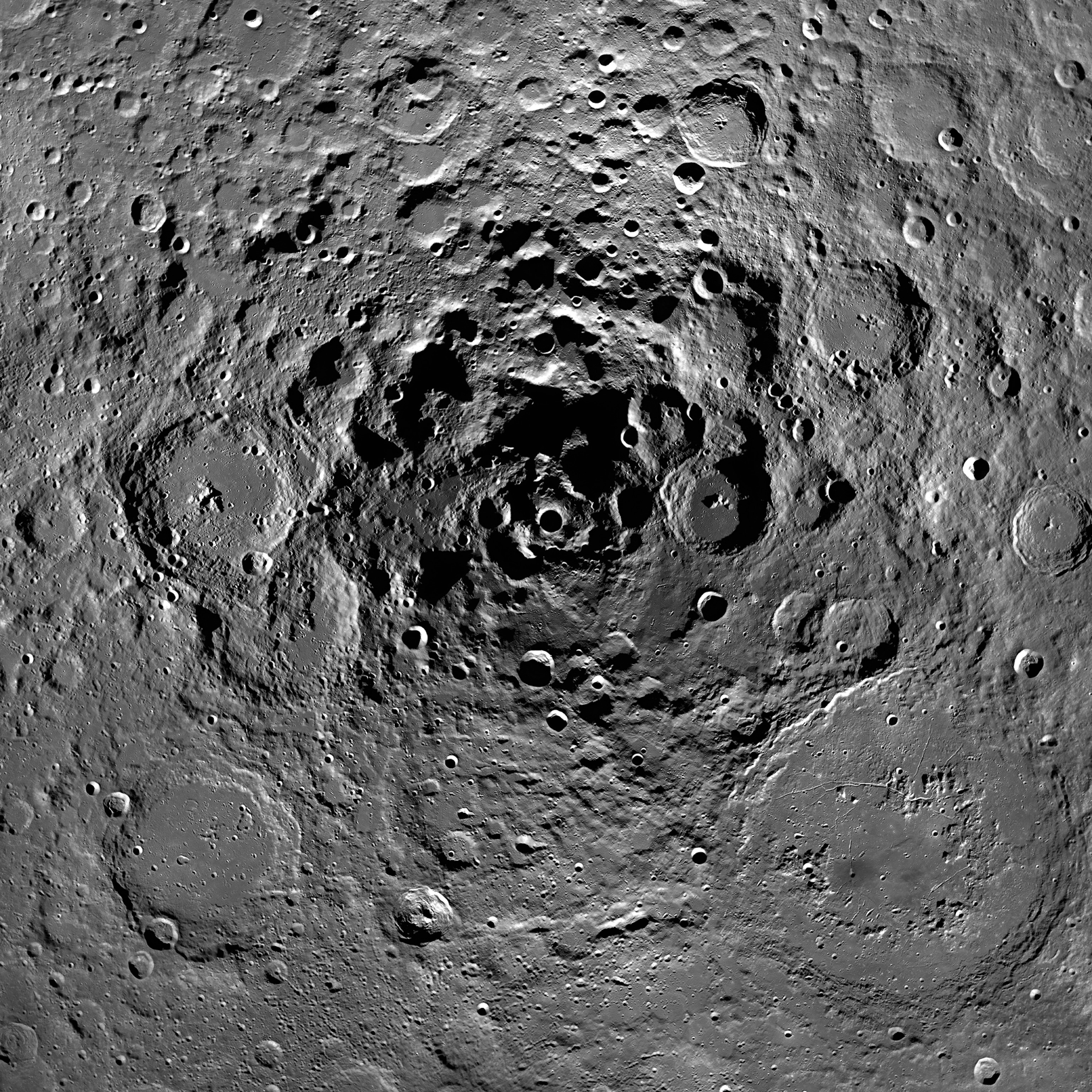
On the poles of the moon, the sun does not rise and set, but rather appears to slowly circle the horizon, occasionally disappearing behind a high peak or crater rim. This phenomenon occurs because the moon is not tilted on its axis as much as Earth is, and the low-hanging sun casts the landscape in a duality of light; some areas are lit for most of the year, while others have not received any direct sunlight for eons.
Much of what we know about this shadowed material came from a 2009 mission to intentionally crash part of a rocket into the shadowed lunar crater Cabeus and measure the debris from the impact. A spacecraft called LCROSS, or the Lunar Crater Observation and Sensing Satellite, followed right behind the empty rocket stage as it smashed into the moon.
“We followed it with the shepherding spacecraft on a suicide mission to observe the impact close-up with all of our instruments, flying ultimately through the ejecta cloud and impacting ourselves,” says NASA’s Anthony Colaprete, the principal investigator of the LCROSS mission.
Transmitting data up to the last second, the spacecraft found lots of water ice but also ices of methane, ammonia, carbon dioxide, and carbon monoxide. LCROSS also measured the flash of light produced as the 5,500-pound rocket stage slammed into the moon, which can tell scientists about the type of material that it impacted. The blast was not as bright as expected, suggesting the material within the PSR may have been “fluffier” than typical lunar soil.
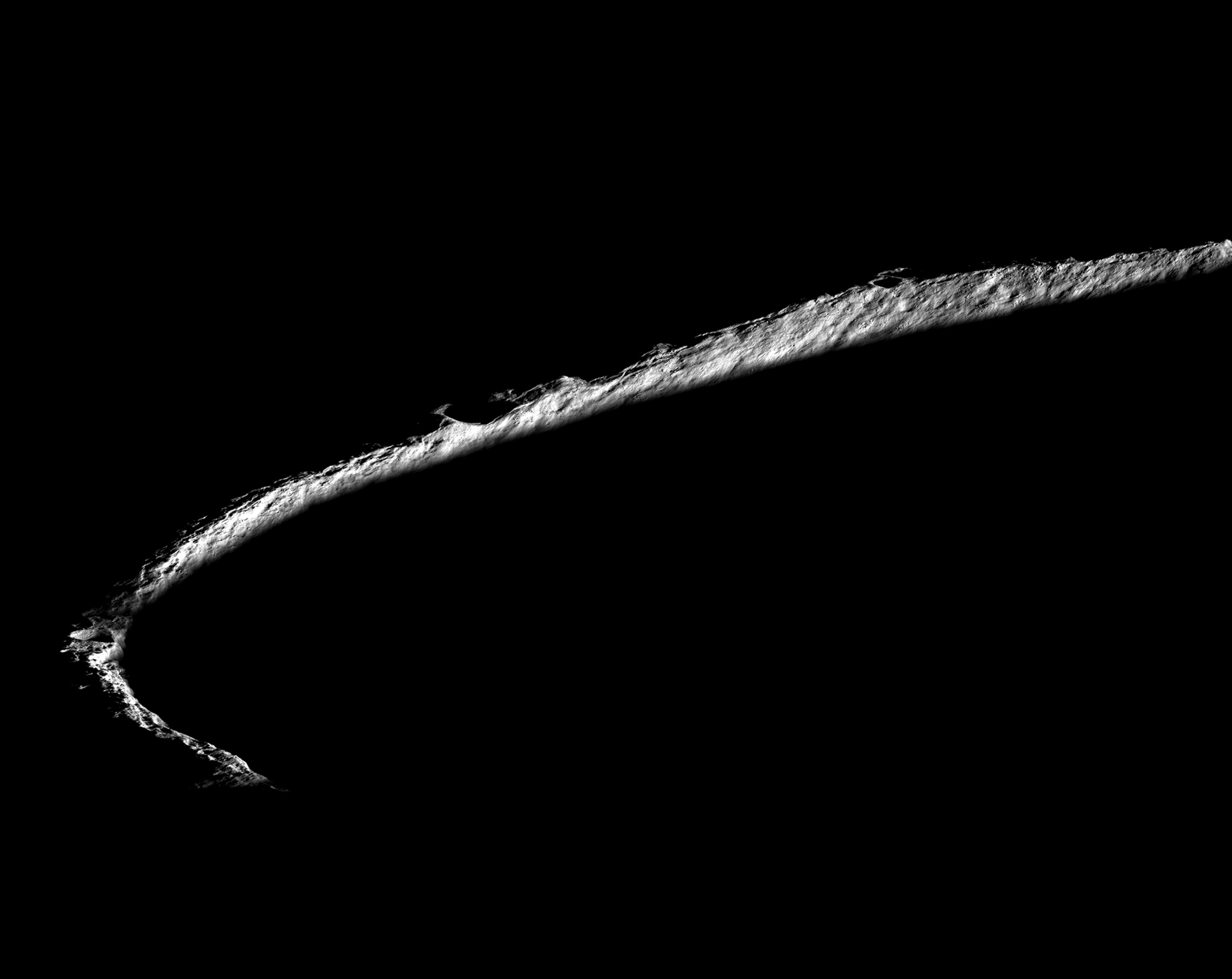
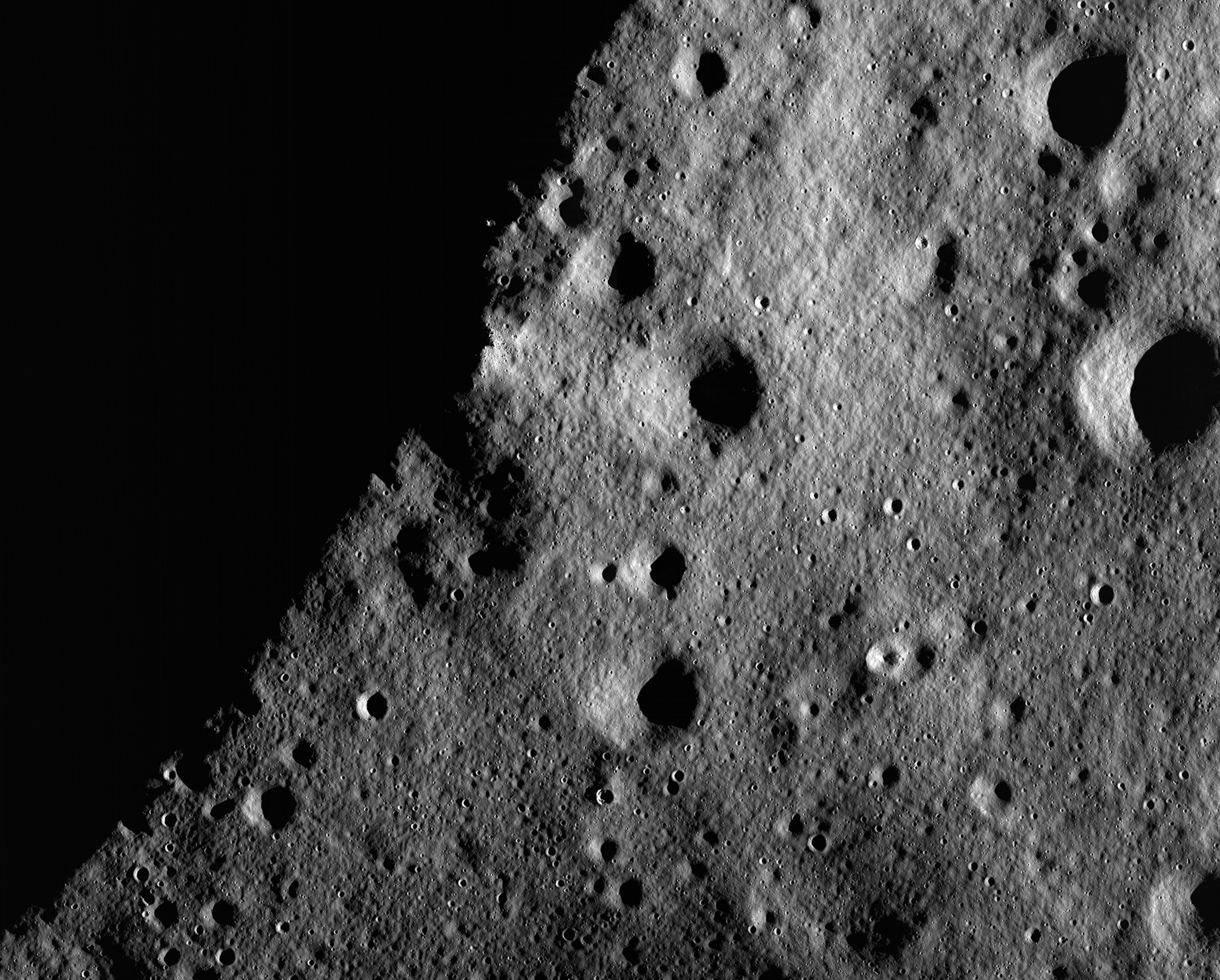
“We know the volatiles are there, but we don’t know if its icy dirt or dirty ice,” Bleacher says. Exactly what happens to this lunar material after sitting in the shadows for billions of years is one of the things that scientists want to figure out.
To learn more about what these shadows contain, NASA needs to get a closer look, which is why the space agency is planning to send a new rover to the lunar south pole—a robotic explorer equipped to handle the frigid realms of the moon. In 2024 the Volatiles Investigating Polar Exploration Rover, or VIPER, is scheduled to land on the lunar surface.

Driving into the darkness
NASA has not landed a spacecraft on the moon, robotic or crewed, since Apollo 17 in 1972. To go back to the surface, the space agency is relying on private companies to build the lunar landers.
Intuitive Machines and Astrobotic Technology have built two commercially developed landers, named NOVA-C and Peregrine, which are slated to launch later this year—each hoping to achieve the first U.S. moon landing since the Apollo program. Astrobotic is also building a larger lander that is planned to carry NASA’s VIPER rover to the surface.
On most parts of the moon, a two-week period of daylight is followed by 14 days of lunar night, making it difficult for spacecraft to survive. Near the south pole, however, where some areas are lit most of the time, the solar panels on the sides of VIPER’s body will allow the rover to operate for more than a hundred days.

During that time VIPER will drive into multiple permanently shadowed regions and use a meter-long drill to extract material for study with a suite of onboard science instruments.
The rover will first explore the shadows of a 50-mile-wide crater near its landing site. “It’s a very old, degraded crater. Our team has estimated its age to be about 3.6 to 3.7 billion years old,” says Colaprete, who is also the project scientist for the VIPER mission. “It has a beautifully tapered entrance from the north … It’s almost like it was designed to have a rover drive into it.”
The VIPER team, operating the rover 24 hours a day, will drive into target shadowed areas twice in what Colaprete calls a “double dip.” The first trip is to map the area, and the second is to drill and scrutinize the extracted material, looking for ice. The team needs to complete both dips within the rover’s nine hours of battery life before driving it to higher ground to recharge with its solar panels.
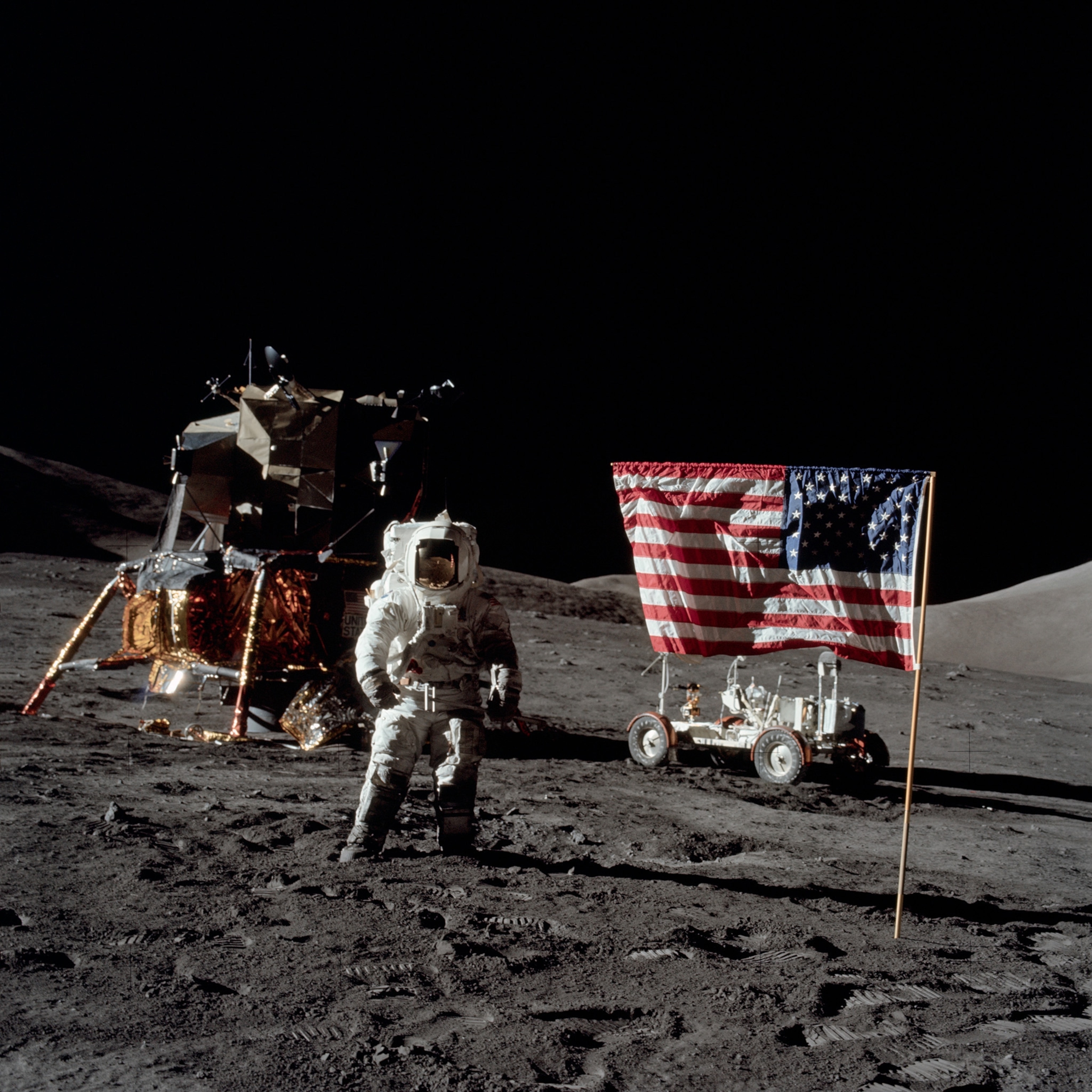
Nobody knows exactly what VIPER will find, but if the material in PSRs is in fact fluffy, the rover could get itself into some deep lunar dirt. To prevent it from getting stuck, VIPER was designed with larger wheels than the Mars rovers, about 1.6 feet wide, and each can turn and move up and down independently.
“It can walk,” Colaprete says. “If we get embedded, buried in deep, soft regolith, we can lift our wheels up like lifting a leg up, and put it forward and drag ourselves out of the quicksand, if you will.”
At different sites near the lunar south pole, in sunny as well as shady spots, VIPER will dig for clues to learn about how much ice is on the moon and where it came from.
By figuring out which sources produced the moon’s ices, scientists can learn something about how water is made and distributed throughout the solar system. Missions like ShadowCam and VIPER will provide hints, but to find out for sure what secrets the moon’s ancient shadows hold, astronauts will need to venture to the lunar south pole and collect key samples.
“The most impressive scientific experiment we ever send anywhere is the human eyes connected to a well-trained brain,” says Noah Petro, a planetary geologist at NASA and the project scientist for the Artemis III mission.
Starting with Artemis III, humanity could enter a new era where people exploring the south pole of the moon make transformative scientific discoveries.
“Understanding what’s happening at the moon today gives us a sense of what’s happened at the moon a billion years ago,” Petro says. “It gives us this guidebook for interpreting our own history, the history of the solar system, and indeed histories of other solar systems in the universe.”

